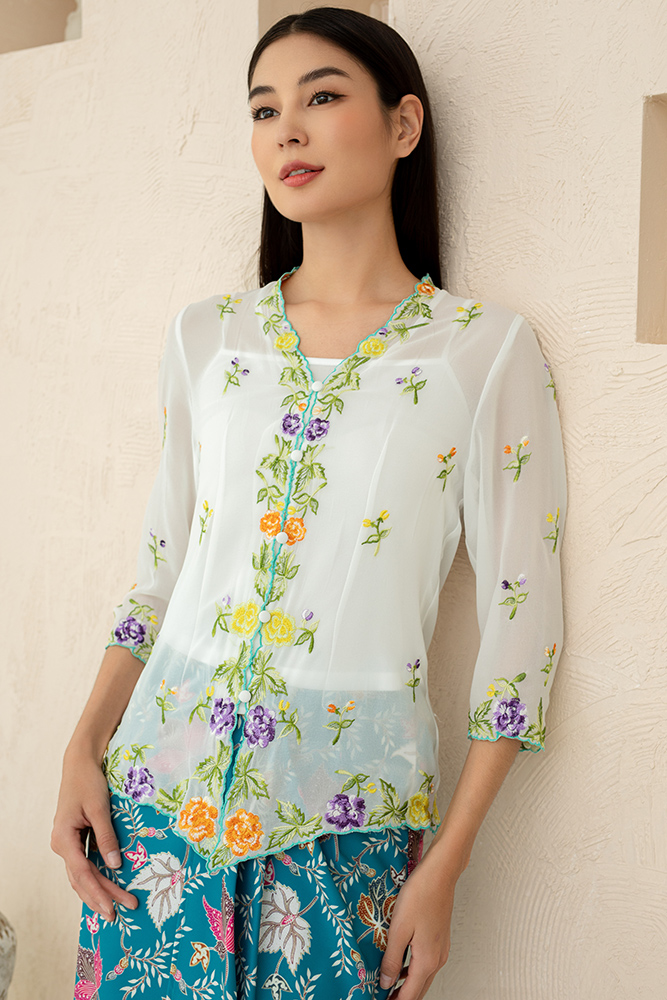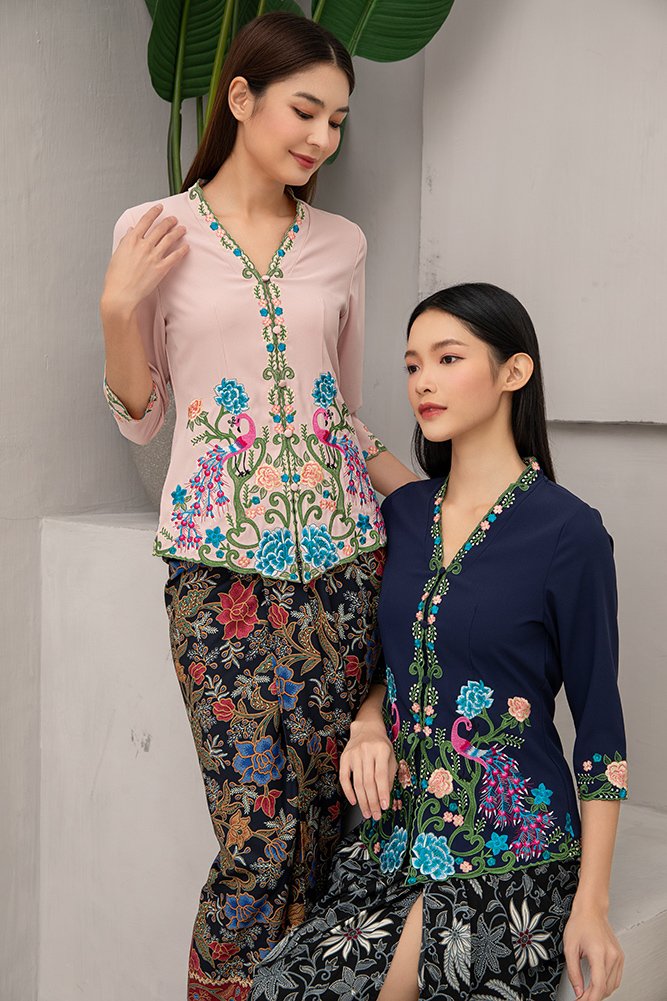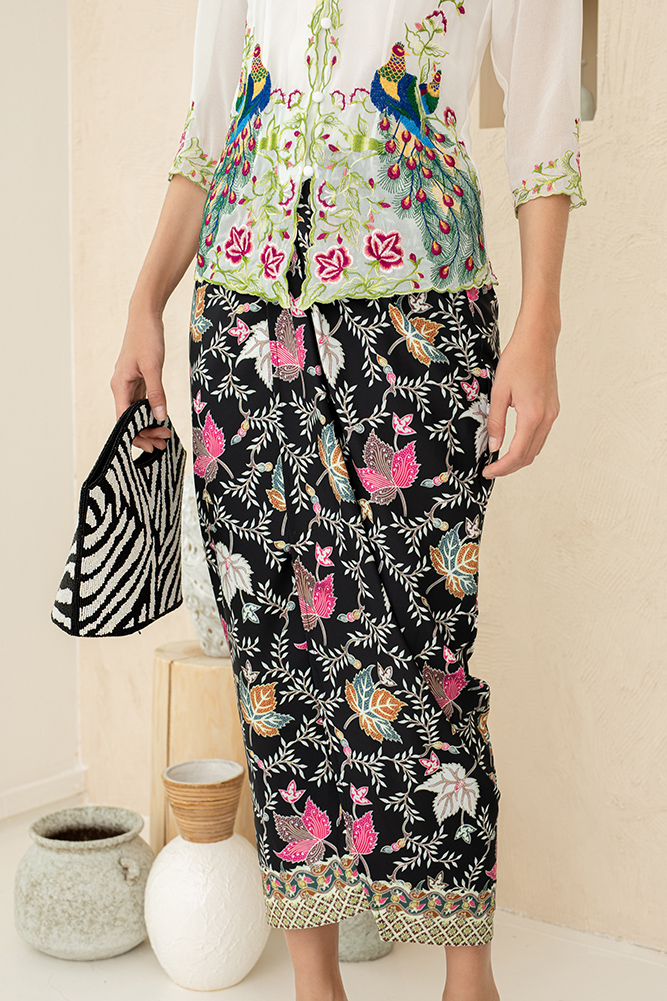The Significance of Nyonya Outfits in Peranakan Culture

Singapore’s cultural landscape is a vibrant tapestry woven from various ethnic and cultural threads. Among these, the Peranakan community, also known as the Straits Chinese, stands out for its unique heritage. This community emerged from the intermarriage between Chinese immigrants and local Malays in the Malay Archipelago between the 15th and 17th centuries. As a result, the Peranakan, or Straits Chinese, developed a distinctive hybrid culture that blends Chinese and Malay traditions.
In Singapore, the Peranakan Chinese community is a notable and cherished part of the population. Although the numbers are relatively small compared to other ethnic groups, their influence on Singaporean culture is significant. The community’s customs, language, and cuisine contribute richly to the nation’s cultural diversity. Among the most iconic elements of Peranakan culture that are still preserved until today are the traditional outfits worn by Peranakan Chinese women, known as Nyonya Kebaya.
Defining Nyonya in Peranakan Culture
In the Peranakan community, "Nyonya" specifically refers to Peranakan women, and the term comes from the Malay word for "lady" or "madam." In countries such as Singapore, Malaysia, Thailand and Indonesia, where Peranakan people resides, Nyonya women are celebrated for their grace and elegance, which is often reflected in their traditional attire- Nyonya Kebaya.
The Main Components of the Nyonya Outfit
Nyonya outfits are a vivid representation of Peranakan traditional costume in which the garments are known for their intricate designs and vibrant colours. The traditional ensemble primarily consists of the Nyonya kebaya and the batik sarong.
Nyonya Kebaya
The Nyonya kebaya is a traditional blouse-dress or an upper-garment that is inspired by the Malay or Indonesian type of kebaya. The distinct feature of Nyonya kebaya is that they are adorned with intricate embroidery and lace, and commonly features floral and nature-inspired motifs. This type of kebaya can be made from various fabrics, including sheer materials like voile, as well as cotton, velvet and lace. Additionally, this top is usually paired with a batik sarong, which is a skirt-like garment that adds additional flair to the outfit.
Batik Sarong
The batik sarong, or batik skirt worn with the Nyonya kebaya, is a long, tubular piece of fabric with patterns known as batik. The vibrant patterns and colours of the batik sarong complement the detailed embroidery of the kebaya, creating a harmonious and visually striking ensemble. The combination of the kebaya’s delicate embellishments with the bold patterns of the sarong highlights the craftsmanship of both garments and adds cultural depth to the traditional attire.
A Closer Look into the Nyonya Kebaya Embroidery Motifs
The embroidery on the Nyonya kebaya is an exquisite part of the attire that adds beauty and cultural significance to the garment. Each motif is carefully crafted to reflect the rich symbolism of Peranakan Chinese heritage. Traditionally, these embellishments feature a variety of motifs, including floral and animal.
- Floral Patterns: Flowers such as orchids, peonies, and roses are some of the commonly-used motifs in Nyonya kebaya embroidery. Peonies for instance are believed by some to symbolize prosperity and honor, while roses signify love and beauty.
- Animal Motifs: Stylized representations of animals, including butterflies, birds, goldfish, and dragons, are also integral to the kebaya’s design. For instance, goldfish motifs signify abundance and success, while dragon motifs embody power and protection. These motifs are not just decorative but also carry meanings related to good fortune and well-being, especially in Chinese culture.
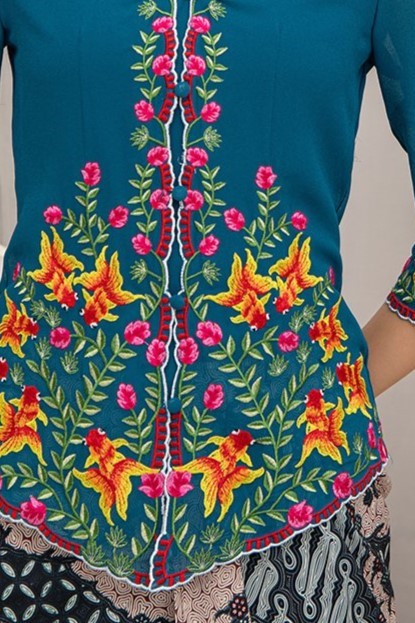
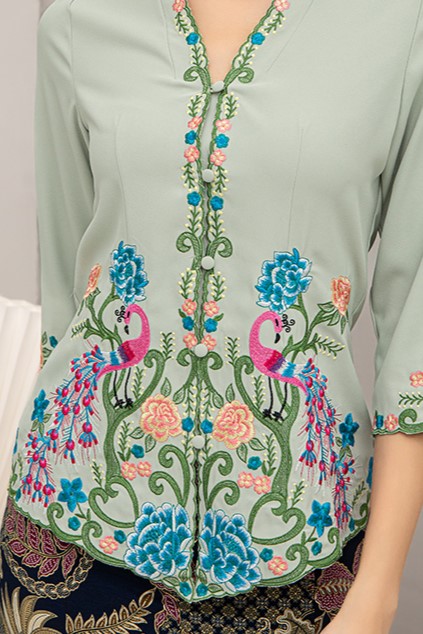
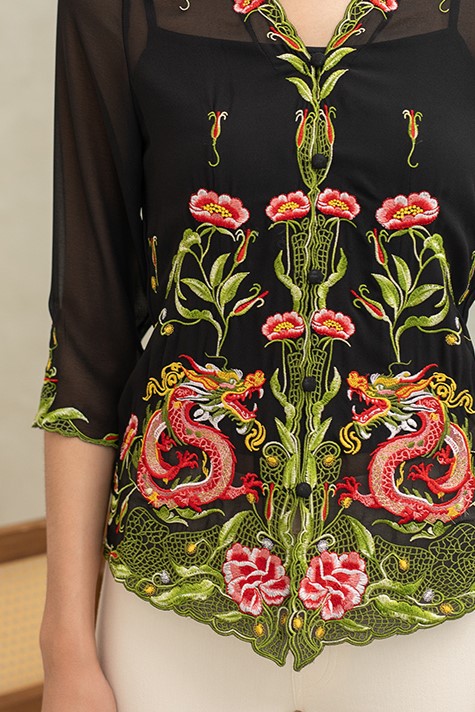
Nyonya Kebaya in floral, goldfishes, peacock, and dragon embroidery motifs
Each embroidery motif on the Nyonya kebaya is more than just decoration, but it also reflects the wearer’s personality and aspirations. The combination of floral, animal, and other abstract patterns creates a tapestry of cultural symbols that enrich the kebaya’s significance and beauty.
The Vibrant Colours of the Kebaya
The choice of colours in Nyonya kebayas also has their own meaning. Bright hues like red, blue, and yellow often symbolize joy, prosperity, and celebration, while pastel shades such as pink and lavender add elegance and refinement. Each colour carries specific meanings, and the use of these colours can enhance the kebaya’s beauty and reflect the wearer’s cultural significance and personal expression.
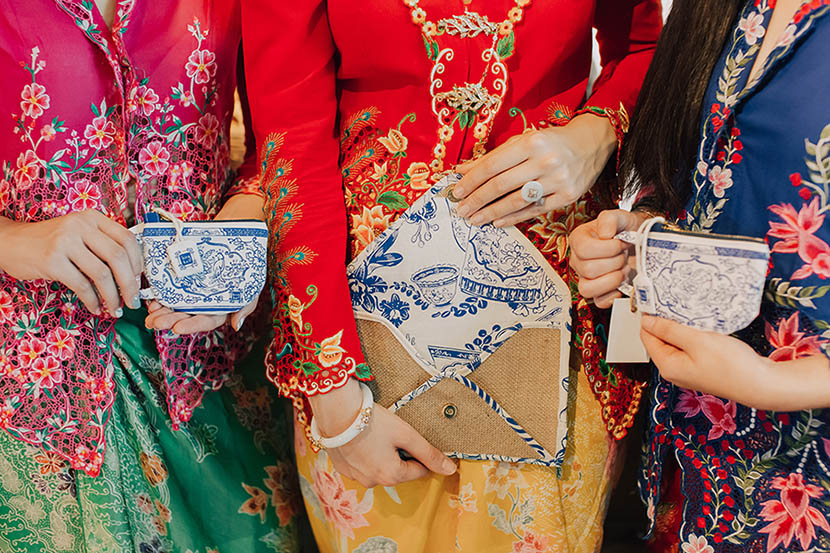
Nyonya Outfits in Modern Times
The Nyonya kebaya, which is part of the Peranakan traditional costumes are more than just clothing but they represent a rich cultural heritage. Today, Nyonya kebaya continue to play a vital role in cultural events and celebrations in Singapore. They are worn during weddings, festivals, and cultural exhibitions, preserving the heritage and identity of the Peranakan community.
These outfits are not just relics of the past but living symbols of a vibrant and evolving Peranakan culture. From the intricate embroidery to the vibrant batik patterns, each element of the Nyonya kebaya tells a story of history, artistry, and cultural pride.
Embrace Traditional Charm with Faire Belle’s Nyonya Kebaya
Discover the elegance of traditional Peranakan fashion in Singapore with Faire Belle’s Nyonya Kebaya collection. Our beautifully crafted Nyonya kebaya and batik sarong combine classic design with a modern touch to reflect the rich heritage. Browse our collection today to find the perfect kebaya that suits your style and occasion.

